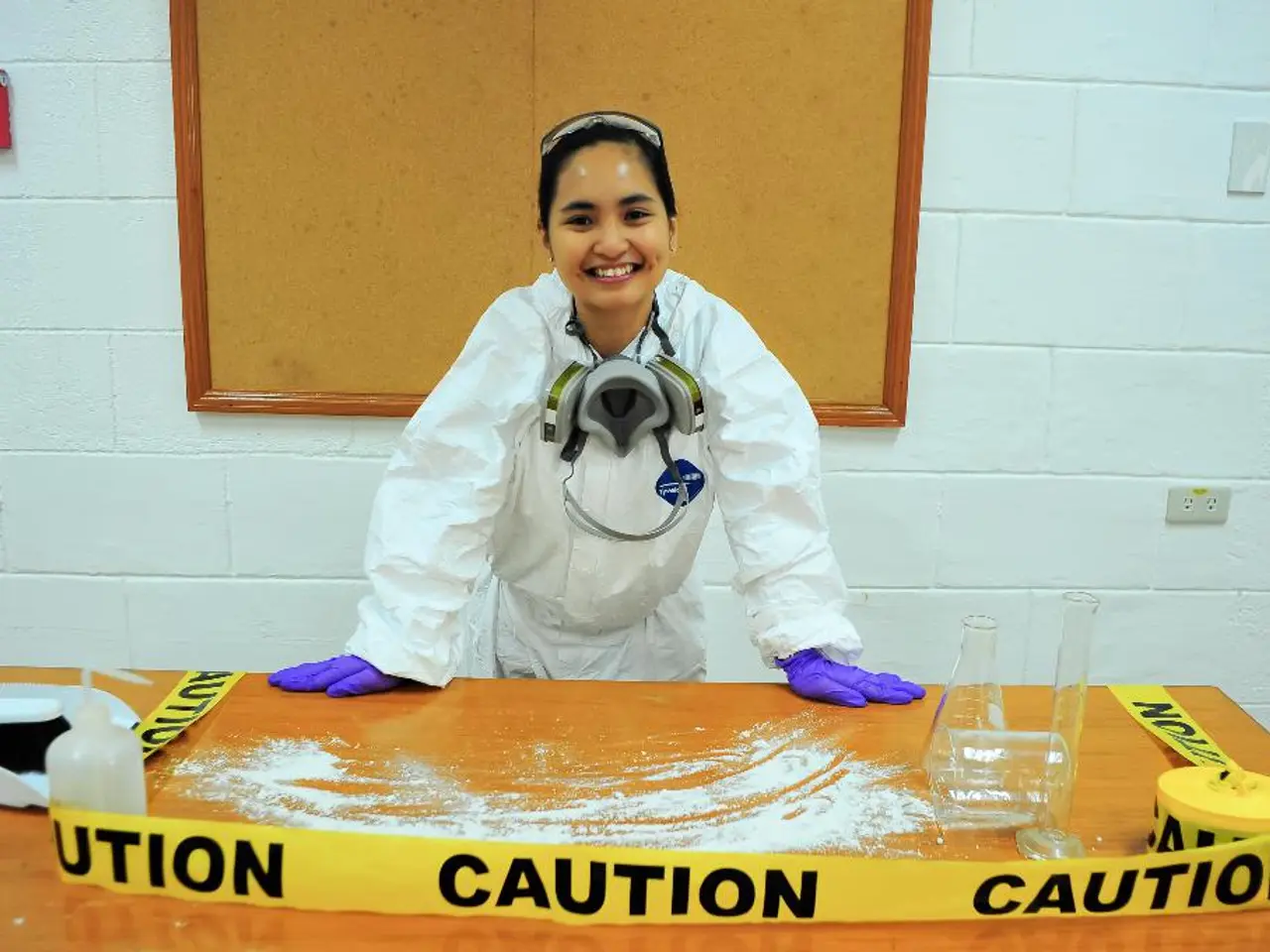Composition of Flu Vaccine: An Examination of Its Components and Rationale
### Unravelling the Components of Flu Shots: A Closer Look at the Main Ingredients
Flu shots are formulated with a carefully chosen array of ingredients to ensure their effectiveness and safety. Here's a breakdown of the key components that make up these vaccines:
#### 1. Antigens
Antigens are the primary active ingredients in flu shots. They mimic the presence of the virus, stimulating the immune system to produce antibodies and develop immunity against the flu. Examples of antigens include hemagglutinin (HA) proteins from various influenza virus strains, such as A/Victoria, A/Thailand, and B/Austria [1][3].
#### 2. Stabilizers
Stabilizers play a protective role, maintaining the integrity of the antigens during storage and transportation. Common stabilizers include sucrose or sorbitol, although gelatin is used in some vaccines, but not typically in flu shots [2].
#### 3. Adjuvants
Adjuvants are added to enhance the immune response, allowing for lower doses and fewer injections. Aluminum salts are common adjuvants, though they are not typically used in flu vaccines. An exception is MF59, which is used in Fluad for people over 65, an oil-in-water emulsion [2].
#### 4. Preservatives
Preservatives are essential for preventing bacterial or fungal contamination, particularly in multi-dose vials. Thimerosal is used in some flu vaccines, although it's less common in newer formulations [1].
#### 5. Purification and Inactivation Agents
Purification and inactivation agents are crucial for ensuring the vaccine's safety by eliminating live viruses. For egg-based vaccines like Afluria, agents like beta-propiolactone are used for inactivation, and sodium taurodeoxycholate disrupts the virus particles [1].
Cell culture-based vaccines like Flucelvax and Supemtek avoid egg-based production, which can be beneficial for those with egg allergies or preferences for non-animal-derived products [3][4].
### The Purpose Behind Each Ingredient
- Antigens are vital for inducing immunity. - Stabilizers help maintain the integrity of the antigens during handling. - Adjuvants can boost efficacy or reduce the amount of antigen needed. - Preservatives ensure the vaccine remains safe from contamination during multiple uses (multi-dose vials). - Purification and inactivation agents ensure the vaccine is safe by eliminating live viruses.
It's important to note that formaldehyde is present in flu vaccines and serves to inactivate toxins from viruses and bacteria that may contaminate the vaccine during production. Vaccines do not contain antibiotics that can cause severe reactions, such as penicillin, but contain other forms like kanamycin or neomycin.
In rare circumstances, the flu vaccine can cause serious side effects, such as allergic reactions. The viruses that cause the flu, known as influenza viruses, are constantly changing, and the flu vaccine is updated every year to remain effective.
Currently, the only flu vaccine that contains gelatin is the Fluad vaccine. Many health experts no longer recommend flu vaccines containing thimerosal. The flu vaccine contains ingredients that are safe and necessary to keep the vaccine shelf-stable and effective.
The side effect is typically a slight soreness or redness in the arm, at the site of the injection. Many myths about vaccinations circulate, including that they weaken the immune system, cause autism, or contain unsafe toxins. These claims are not based on scientific evidence.
- In the flu shot, antigens, such as hemagglutinin proteins from influenza virus strains like A/Victoria, A/Thailand, and B/Austria, are the primary active ingredients that stimulate the immune system, inducing immunity against the flu.
- Stabilizers, like sucrose and sorbitol, are included in flu shots to maintain the integrity of the antigens during storage and transportation.
- Adjuvants, such as aluminum salts or MF59, are added to some vaccines to enhance the immune response but are not typically used in flu vaccines.
- Preservatives, such as thimerosal, are essential in multi-dose vials to prevent contamination and ensure vaccine safety.
- Purification and inactivation agents, like beta-propiolactone in egg-based vaccines or sodium taurodeoxycholate, ensure vaccine safety by eliminating live viruses.
- The flu vaccine also contains other ingredients like kanamycin or neomycin as purification and inactivation agents.
- Formaldehyde, present in flu vaccines, inactivates toxins from viruses and bacteria that may contaminate the vaccine during production, but it does not contain antibiotics that can cause severe reactions.
- Although the flu vaccine can cause rare serious side effects like allergic reactions, there are no scientifically proven links between vaccinations and health concerns such as weakening the immune system, causing autism, or containing unsafe toxins in their formulation.




